Invest
Coronavirus correction could be an opportunity for the smart investor
Savvy Australian investors looking to buy and hold some of the largest companies in the world would be wise to consider looking beyond the ASX, writes Chi-X Director and Chief Commercial Officer Dr Shane Miller.
Coronavirus correction could be an opportunity for the smart investor
Savvy Australian investors looking to buy and hold some of the largest companies in the world would be wise to consider looking beyond the ASX, writes Chi-X Director and Chief Commercial Officer Dr Shane Miller.

Local and overseas sharemarkets entered correction territory in the final week of February as coronavirus fears saw a major sell-off across the board.
While the future remains uncertain, one thing you can count on is that it always will be uncertain, regardless of market cycles and new pandemics.
Yet a quick look at mega caps will reveal the names of some of the largest companies on the planet by market cap: and businesses that have survived numerous headwinds and market cycles, from the 1987 crash to the global financial crisis.
When the world begins to panic, it may be worth looking at companies that have stood the test of time.

Why mega caps?
Financial education website Investopedia describes a “mega cap” as a company with “a market capitalisation above $200 billion”.
The spelling gives away the American origin, indicating that the threshold is $US200 billion. But to be generous, this article considers all companies with a market capitalisation greater than $A200 billion as mega caps.
So, what companies are mega caps? The obvious examples are the technology giants Microsoft (NASDAQ: MSFT), Apple (NASDAQ: AAPL), Intel (NASDAQ: INTC) and Visa (NYSE: V).
Other mega caps that have been in business for many years and navigated many market cycles include:
- Johnson & Johnson (NYSE: JNJ)
- Merck (NYSE: MRK)
- Disney (NYSE: DIS)
- Pfizer (NYSE: PFE)
- JPMorgan (NYSE: JPM)
- Bank of America (NYSE: BAC)
- Berkshire Hathaway (NYSE: BRK)
- Exxon Mobile (NYSE: XOM)
- McDonald’s (NYSE: MCD)
There is a clear trend here: almost every mega cap mentioned above is a household name in Australia.
By contrast, the Australian listed stock with the largest market capitalisation is CSL (ASX: CSL) at $AU140 billion. The company recently edged the top spot from Commonwealth Bank of Australia (ASX: CBA) with a current market cap of $137 billion.
If Aussie investors want mega caps, they won’t find any on the ASX. But they can now buy TraCRs (transferable custody receipts) over every single mega cap mentioned above without setting up a US brokerage account.
Playing the long game
If you consider yourself a long-term investor, rather than a short-term trader, then it’s worth turning your attention to alternative securities and exchanges. Innovation is driving new opportunities and a broader investment universe is never a bad idea when it comes to building an investment portfolio.
Mega caps have been delivering solid returns to millions of investors for generations. While the future will always remain uncertain, history shows that strong companies built on a solid foundation and a long track record are well placed to weather the storm of market volatility.
As mega cap investor Warren Buffett says, “better to buy a wonderful company at a fair price than a fair company at a wonderful price”.
Dr Shane Miller is a Director and Chief Commercial Officer at Chi-X Australia

Shares
DREST gears up for innovation with the appointment of new co-CEO and CTO
Luxury fashion and lifestyle mobile game DREST has announced significant leadership changes as it prepares for an exciting phase of development and expansion. Read more
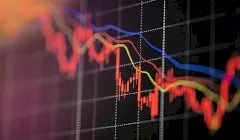
Shares
Hope for investors scared by share and crypto crashes
As share markets and cryptocurrency take a beating following the tightening of monetary policy across the world, investors are contemplating their next move. Read more

Shares
Cannon-Brookes tries to block AGL demerger
Mike Cannon-Brookes is not giving up on AGL after the latter announced 15 June as the date of the demerger vote. Read more
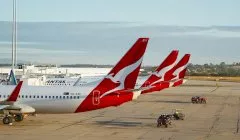
Shares
Qantas set to acquire Alliance Aviation
The two airlines have entered into a scheme implementation deed. Read more
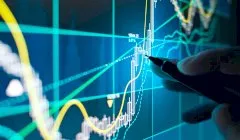
Shares
Bond and share investors may shrug off RBA’s rate hike
As mortgage holders reel from the prospect of having to reach deeper into their hip pockets to make bigger repayments following the Reserve Bank of Australia’s (RBA) interest rate hike from 0Read more
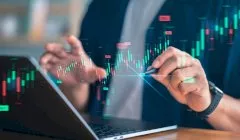
Shares
How to buy Shares: A beginner’s guide in 2022
So you want to get in on the stock market action? Congratulations, that’s an exciting step! But first, there are a few things you should know before you buy your first shares. Read more

Shares
Elon Musk chokes up on bid to swallow Twitter
The battle of the bird has intensified over the last week, as Tesla and SpaceX founder Elon Musk has ramped up his aggressive campaign to buy the entirety of social media giant, Twitter. Read more
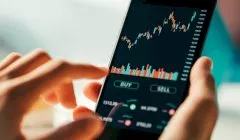
Shares
How to Make Money in Short Selling
What is short selling? There is a common practice for people who actively trade in the stock market, which is to “buy low and sell high”, but what if you can still make money by doing the opposite? Read more

Shares
DREST gears up for innovation with the appointment of new co-CEO and CTO
Luxury fashion and lifestyle mobile game DREST has announced significant leadership changes as it prepares for an exciting phase of development and expansion. Read more

Shares
Hope for investors scared by share and crypto crashes
As share markets and cryptocurrency take a beating following the tightening of monetary policy across the world, investors are contemplating their next move. Read more

Shares
Cannon-Brookes tries to block AGL demerger
Mike Cannon-Brookes is not giving up on AGL after the latter announced 15 June as the date of the demerger vote. Read more

Shares
Qantas set to acquire Alliance Aviation
The two airlines have entered into a scheme implementation deed. Read more

Shares
Bond and share investors may shrug off RBA’s rate hike
As mortgage holders reel from the prospect of having to reach deeper into their hip pockets to make bigger repayments following the Reserve Bank of Australia’s (RBA) interest rate hike from 0Read more

Shares
How to buy Shares: A beginner’s guide in 2022
So you want to get in on the stock market action? Congratulations, that’s an exciting step! But first, there are a few things you should know before you buy your first shares. Read more

Shares
Elon Musk chokes up on bid to swallow Twitter
The battle of the bird has intensified over the last week, as Tesla and SpaceX founder Elon Musk has ramped up his aggressive campaign to buy the entirety of social media giant, Twitter. Read more

Shares
How to Make Money in Short Selling
What is short selling? There is a common practice for people who actively trade in the stock market, which is to “buy low and sell high”, but what if you can still make money by doing the opposite? Read more










